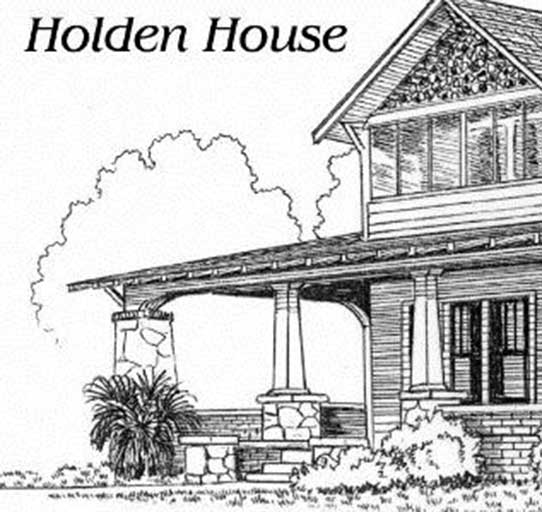In 1985, during the “Black Friday” wildfires1 Flagler County workers bulldozed ground near the eastern bank of the Tomoka River in an attempt to prevent flames from moving toward the few homes that were standing in that area during the time. Flagler Beach resident, Eddie Epp, then discovered an Indian shell midden that was unearthed by the bulldozers and collected pieces of pottery (ceramics), several shells and a few animal bone fragments. The nearly forgotten pieces of ceramics were identified from comparisons at the Florida Museum’s Ceramic Technology Laboratory – St. Johns Series Types as originating from the people of the St. Johns Culture that once inhabited present-day Flagler County. There were five different types of ceramics discovered: St. Johns basketry impressed, St. Johns plain, St. Johns scored, St. Johns check stamped and St. Johns bold check stamped.
The St. Johns Culture existed in northeastern Florida, for over 2000 years, from 500 BCE until shortly after European contact in the 1600s. Geographically, it stretched along the St. Johns River and its tributaries to as far south as present-day Cocoa Beach (Figure 1). It was inhabited by various tribes of indigenous Indians who spoke the Timucua2 language and by the Mayacas3 people. Indian villages and camps were located near rivers, wetlands, lakes, coastal lagoons and estuaries where there were year round food sources and easily accessible water transportation.
St. Johns Culture ceramics, like all pre-industrial ceramics, assist archaeologists in determining chronological timelines, age, migration, diet, social structure, trading activities and many more topics of past societies and cultures. A more precise understanding of the Timucua and Mayacas people is emerging from the continuing study of their artifacts as they left no written records.

Twenty pieces from this particular discovery of St. Johns Culture ceramics, shells and animal bone fragments (Figures 2 through 21) were donated to the Flagler County Historical Society by Eddie Epp and are now on display in the Holden House Research Annex.



3-1/2” x 1-7/8”
(ID: 25-3)

2-1/2” x 1-3/16” (ID: 25-4)

2” x 1-1/2”
(ID: 25-5)

2” x 3/4”
(ID: 25-6)

1-1/8” x 1-1/4”
(ID: 25-7)

1-1/2” x 1-1/2”
(ID: 25-8)

(ID: 25-9)

(ID: 25-10)

(ceramic) – 2-3/4” x 2” (ID: 25-11)

(ceramic) – 2” x 1-1/2” (ID: 25-12)

(ceramic) – 2-1/4” x 1-1/2” (ID: 25-13)

(ID: 25-14)

(ID: 25-15)

(ID: 25-16)

(ID: 25-17)

(ID: 25-18)


Notes
1 The “Black Friday” wildfires (more than 20) burned land in 29 counties in Florida from the Panhandle to the Florida Keys in May 1985. Flagler County was the hardest hit as 24,055 acres were burned, 131 homes destroyed and 200 others damaged. Over 10,000 Flagler County residents were directly impacted, but no deaths occurred in the county.
2 Timucua (tee-MOO-qua) language was named by Europeans and then used to classify approximately 35 chiefdoms of indigenous Indians living in present-day northeastern and north central Florida and southeastern Georgia. At the time of European contact their population was estimated to be between 100,000 and 200,000 or more, and they occupied about 19,200 square miles of territory. These people were decimated by wars with European colonists and other Indian tribes, slavery and the introduction of European and African diseases which they had no immunity. By1700, their population was reduced to approximately 1000. The Spanish took
some surviving Timucuans to Cuba and the last known Timucua Indian died there in 1767. It is likely that the few remaining Timucuans that were left in Florida were absorbed into the Seminole tribe and that this culture has been extinct since the mid-1700s.
3 Mayacas people, named by the Spanish, were a tribe of indigenous Indians that lived in central Florida (upper St. Johns River valley to just south of Lake George) during the time of European contact. The Mayacas people were hunter-fisher-gatherers and shared the ceramics tradition of the St. Johns Culture with the Timucuans.
Sources
Florida Museum – Ceramic Technology Laboratory – St. Johns Series Types. Retrieved April 24, 2017, from https://www.floridamuseum.ufl.edu/ceramiclab/galleries/stjohns/
Milanich, Jerald. Florida Indians and the Invasion from Europe. Gainesville: University Press of Florida, 1998.
Milanich, Jerald. The Timucua. Malden: Blackwell Publishers, Inc., 1999.
Wheeler, Jason. (May 18, 2015). 30 years later, ‘Black Friday’ fires still impact Flagler. Retrieved from http://www.mynews13.com//content/news/cfnews13/news/article.html/content/news/articles/cfn/2015/5/18/firefighters_in_flag.html




